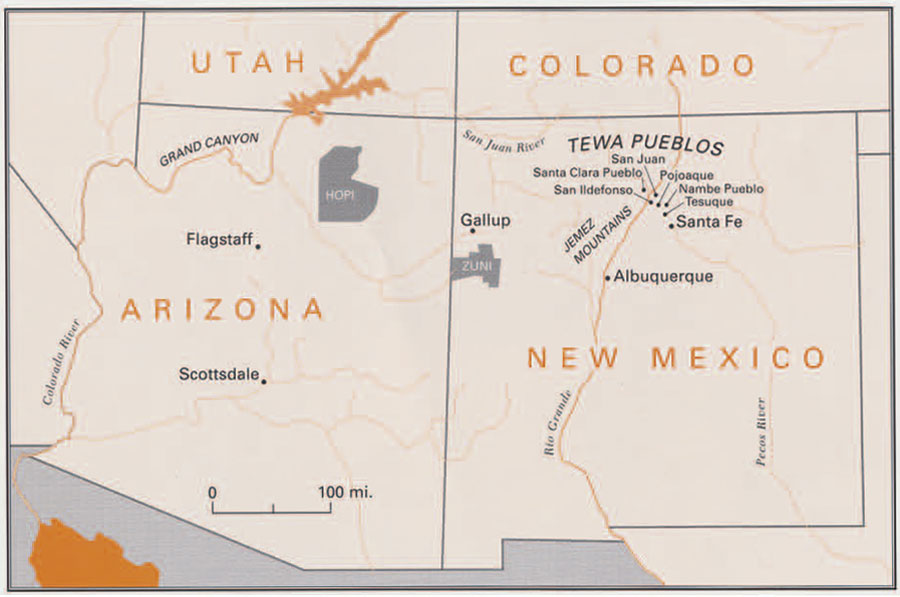This special Expedition on Native Fairs and Markets of the Southwest takes issues of tradition and innovation, preservation and change, and the conflict between Euro-American and Pueblo values and looks at them in five different settings. The articles are based on papers read at a symposium organized by issue editor Bruce Bernstein for the American Ethnological Society and Council for Museum Anthropology Meetings held in Santa Fe in April 1993.
Lea McChesney begins with the story of the famous Hopi potter Nampeyo and her potter offspring. She shows how marketing practices have created a “Nampeyo” pottery dynasty—”generations in clay”—and a demand for specific, named potters-as-artists and styles-as-art, practices which clash with First Mesa values. Next, Bruce Bernstein asks what an innovative Nambe pot that was nearly judged Best of Show in Santa Fe’s 1992 Indian Market can tell us about Indian Market, “art” potter, the judging process, and, in the end, the packaging of Pueblo culture.
Linda Eaton focuses on “The Hopi Craftsman,” a show developed by the Museum of Northern Arizona (MNA) in 1920 and “devoted to saving the arts from expected certain extinction.” She shows how, in the course of so doing, the show has created a “marketable fantasy” that affects both buyers and producer-sellers. Then, Duffle Westheimer looks at MNAs three annual exhibitions—Hopi, Zuni, and Navajo—as a group. She lays out the ways the aesthetic and scientific goals of the founders, Mary-Russell and Dr. Harold Colton, shaped the work and work categories of native artists as well as the views of the audience. And in the last article, Tessie Naranjo take us into Santa Clara Pueblo to show how her community lives in two worlds, one in which potting is a communal activity, carried out with a deep sense of relationship to the land, and one in which it is subject to a reward system based on Euro-American technical and artistic standards.
In a final section, we leave the Southwest and turn to the East and to the dealers, travelers, and curators who constituted the early market for Native American crafts. This set of vignettes on the Southwest pottery collections at the University of Pennsylvania Museum ends with a newly established project which (with a new, permanent Southwest gallery scheduled to open at the Museum in the spring of 1995) brings us squarely into the present. Yet on the whole, this issue is a retrospective. It helps us all see, no matter where we stand around the market table, how we got there. It makes us aware of the hidden goals and values of those who, no matter how well intended, display, judge, interpret (and sell) the work of others.
Lee Horne
Editor

